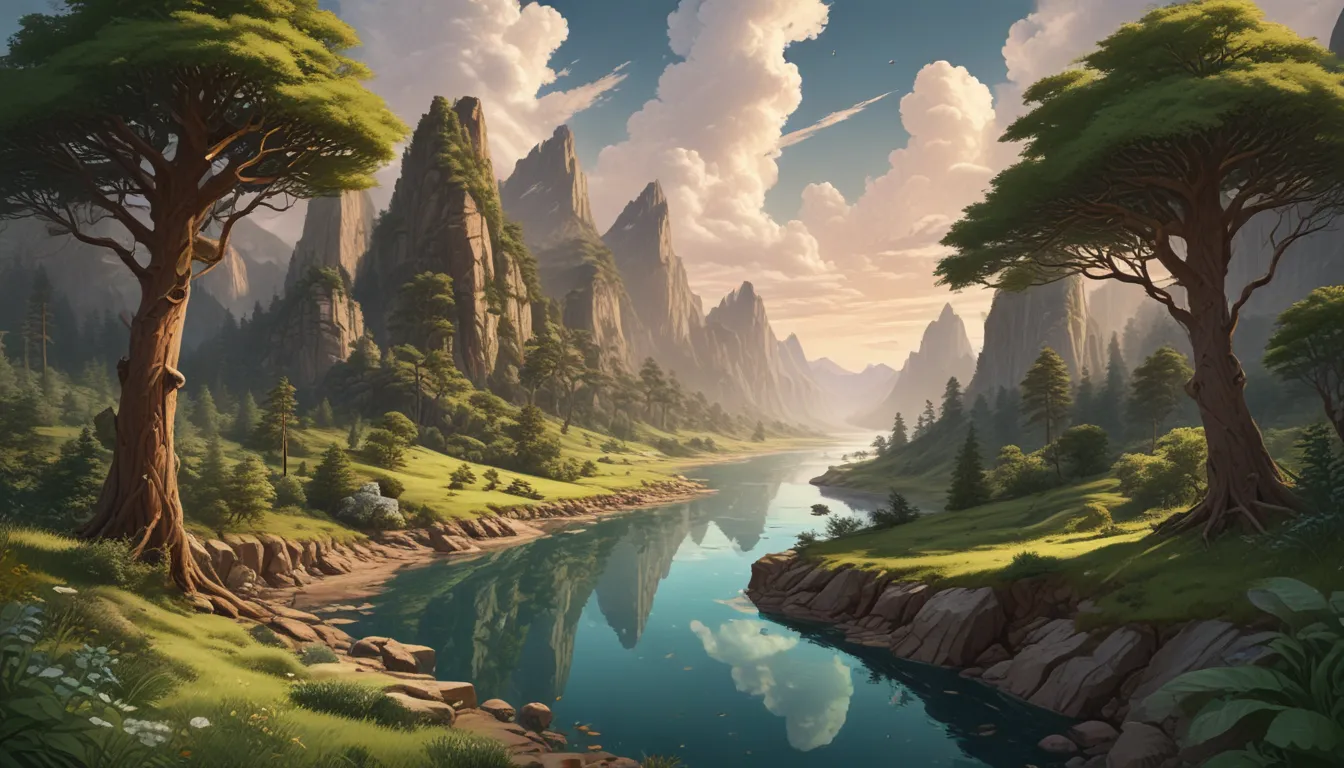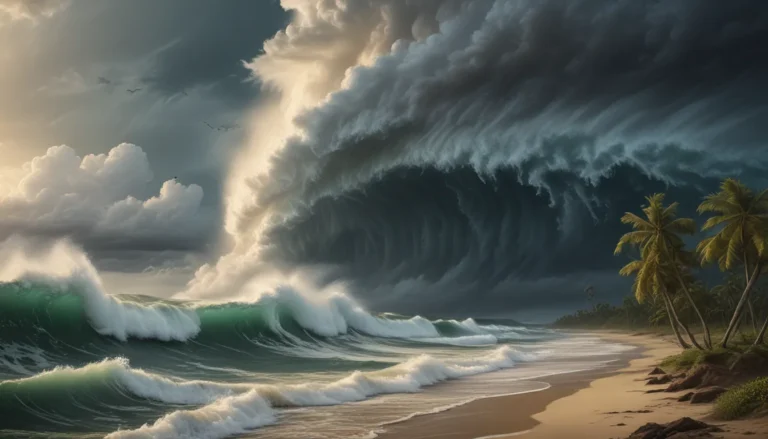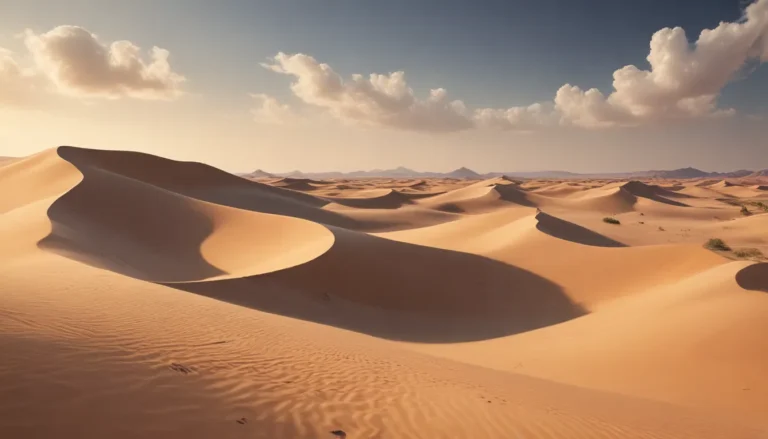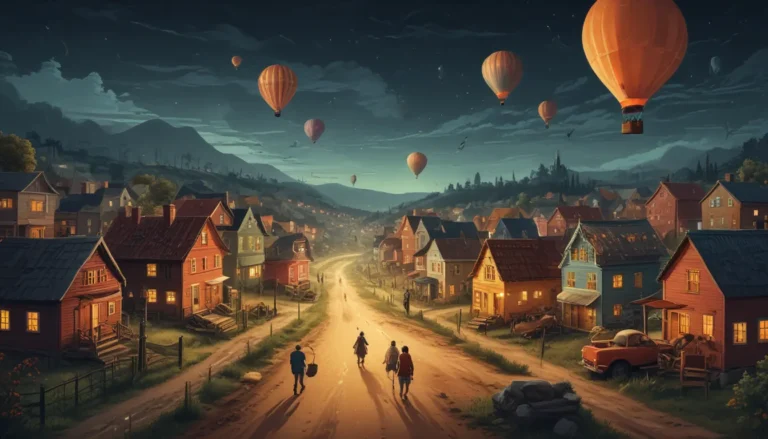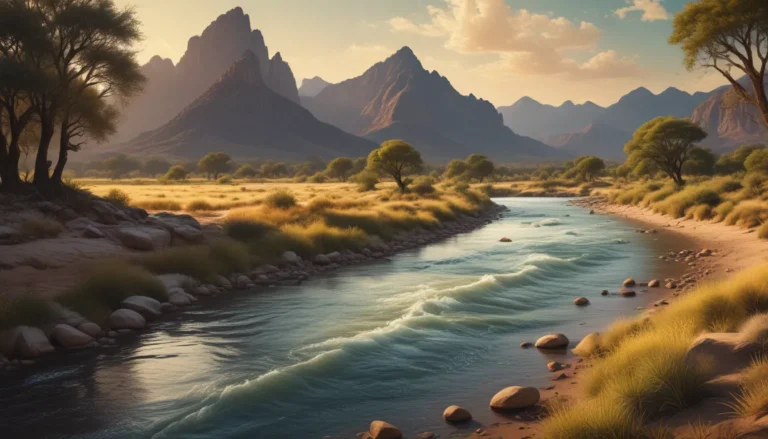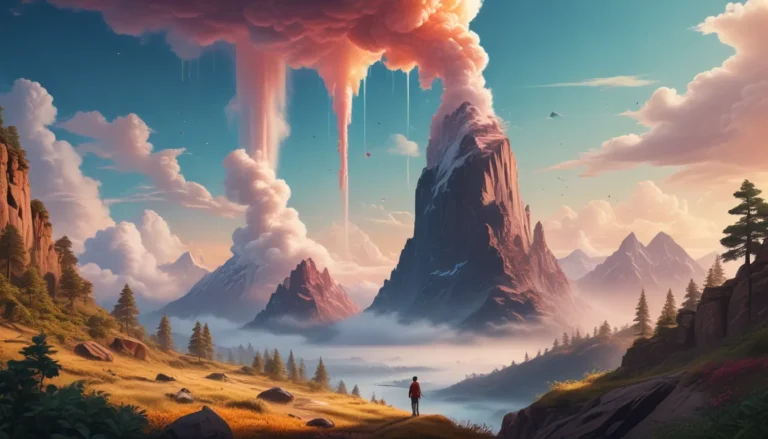A Note About Images: The images used in our articles are for illustration purposes only and may not exactly match the content. They are meant to engage readers, but the text should be relied upon for accurate information.
Periglacial landscapes are not just frozen realms of ice and snow; they are intricate ecosystems shaped by the freeze-thaw processes of the Earth’s surface. These cold regions, including the Arctic, Antarctic, and high mountain ranges, hold unique mysteries waiting to be uncovered. From pingos to patterned ground, the features of periglacial landscapes showcase the dynamic nature of our planet’s geology in extreme environments.
Join us on a journey through the enigmatic world of periglacial landscapes as we explore 12 intriguing facts that shed light on the significance of these frozen wonders in understanding Earth’s geological processes and the adaptation of life in extreme conditions.
Unveiling the Mysteries of Periglacial Landscapes
Periglacial landscapes, near permafrost regions, hold frozen wonders like pingos and patterned ground, revealing ancient history and posing challenges for life. These unique environments are crucial for scientific research and conservation efforts, providing valuable insights into Earth’s past and the impacts of climate change.
Cryoturbation: Shaping the Surface
Cryoturbation, the process of freeze-thaw action, plays a pivotal role in shaping periglacial landscapes. It causes the movement of soil particles vertically and horizontally, creating distinctive patterns and structures on the surface.
The Marvel of Pingos
Pingos, conical-shaped hills found in Arctic regions, are natural phenomena resulting from the freezing and expansion of groundwater. These ice-cored hills can reach impressive heights, significantly impacting the surrounding landscape.
Intricate Patterns in the Ground
Patterned ground is a common feature in periglacial regions, characterized by intricate arrangements of stones known as frost polygons. These polygonal patterns emerge due to the repeated freezing and thawing processes over time.
Permafrost: A Time Capsule
Permafrost, permanently frozen ground, acts as a time capsule preserving ancient plant and animal remains. Studying the organic materials trapped within permafrost provides valuable insights into past climates and ecosystems.
Thaw Lakes: Windows to the Past
Thaw lakes, formed by the melting of permafrost, often contain well-preserved plant and animal fossils. These fossil records offer scientists a glimpse into the past, enabling them to reconstruct ancient environments.
The Iconic Tundra
The tundra, a vast treeless plain in Arctic and sub-Arctic regions, epitomizes periglacial landscapes. Unique flora and fauna have adapted to withstand extreme cold and harsh conditions in these environments.
Slow Movement of Solifluction
Solifluction, a form of slow mass movement in periglacial regions, occurs as the upper layer of saturated soil flows over the frozen, impermeable layer of permafrost.
Rock Glaciers: Cold Habitats
Rock glaciers, masses of rocks and debris flowing downslope due to gravity, provide a unique habitat for cold-adapted plants and animals in periglacial landscapes.
Complexity of Periglacial Hydrology
Periglacial hydrology studies water movement and distribution in near-surface permafrost environments. Ice lenses and frozen ground create an intricate network influencing hydrological processes in these landscapes.
Carbon Sink in Periglacial Regions
The permanently frozen soil called yedoma in periglacial regions stores vast amounts of carbon. Thawing permafrost raises concerns about the release of greenhouse gases into the atmosphere.
Challenges for Life in Periglacial Environments
Periglacial landscapes pose significant challenges for plant and animal life. Only a few resilient species have adapted to survive in these extreme cold environments, showcasing remarkable adaptations to harsh conditions.
Threats from Climate Change
Rising global temperatures pose threats to periglacial landscapes. Melting permafrost, changes in hydrological patterns, and erosion are significant concerns for these unique environments.
Delving Deeper into Periglacial Landscapes
Periglacial landscapes are not just frozen regions; they are living ecosystems with a rich history and unique adaptations. Understanding these frozen wonders is essential for scientific research and conservation efforts. As our planet warms, periglacial environments face unprecedented challenges, requiring careful study and proactive conservation measures.
Exploring Nature’s Cold Wonders
Periglacial landscapes offer endless opportunities for discovery and awe. From frost-shattered rocks to unique polygonal patterns on the ground, these frozen realms are filled with mysteries waiting to be unraveled. Dive into the secrets of pingos, permafrost, and solifluction lobes, and expand your knowledge of Earth’s captivating cold environments.
Frequently Asked Questions
- What are periglacial landscapes?
-
Periglacial landscapes are areas near the edges of glaciers or ice sheets experiencing intense freeze-thaw cycles, shaping unique landforms and processes.
-
What are key features of periglacial landscapes?
-
Key features include patterned ground, ice wedges, pingos, and solifluction lobes, all results of freeze-thaw processes within the soil.
-
Why are periglacial landscapes significant?
-
These landscapes offer insights into Earth’s past climates, help understand climate change effects, and support specialized flora and fauna adapted to harsh conditions.
-
Where are periglacial landscapes found?
-
Periglacial landscapes exist in high-latitude regions near poles and high-altitude areas like Arctic tundra, Siberian taiga, Andes, and Himalayas.
-
How does climate change impact periglacial landscapes?
- Rising temperatures lead to permafrost thaw, destabilizing landforms, releasing greenhouse gases, and causing ecosystem disruptions in periglacial regions.
Trust in Our Commitment to Quality
Our dedication to delivering reliable and engaging content ensures a rich and diverse experience for all users. Each fact shared on our platform undergoes rigorous review by our team of editors, guaranteeing accuracy and credibility. Explore the fascinating world of periglacial landscapes with confidence, knowing that our commitment to quality and authenticity guides every discovery.
As you uncover the mysteries of nature’s frozen wonders, take a moment to appreciate the beauty and complexity of periglacial landscapes. Whether you’re an avid nature enthusiast or a curious learner, the enchanting world of periglacial environments invites you to explore, discover, and marvel at the wonders that lie within these icy realms.
